A Frosty November brings an Early Icewine Harvest
November 23, 2010 (Kelowna, BC) – This has been a truly unusual year for vintners in British Columbia. After a very late BC grape harvest, ending a mere two weeks ago for some wineries, the 2010 Icewine harvest is one of the earliest on record with the first frozen bunches being picked on November 22; second only to the November 5 harvest in 2003.
Icewine has been recognized as one of Canada’s signature wines ever since the first vintage at Hainle Vineyards in 1974. This year, twenty-three wineries expressed interest in picking the “liquid gold” and were delighted with the late-November cold snap. The first grapes were brought in early on November 22 at a chilly -11°C (12°F) by Tinhorn Creek Vineyards in Oliver who harvested 1-acre of Kerner.
The temperatures dropped overnight when Summerhill Pyramid Organic Winery was picking, and is an icy -16°C (1.5°F) this morning for the harvest at Tantalus Vineyards, Mission Hill Family Estate Winery, Quails’ Gate Estate Winery, Van Westen Vineyards and Nk’Mip Cellars. The entire 2010 Icewine harvest is expected to be completed by November 25 and everyone at the wineries can then toast to another fine vintage and enjoy the holiday season with the rest of us!
To keep up-to-date on the harvest, simply visit www.twitter.com to follow @winebcdotcom and your favourite local wineries, then search #BCHarvest2010 and #Icewine2010.
VQA REGULATIONS FOR ICEWINE PRODUCTION
The Vintners Quality Alliance regulations closely control the production of Icewine. The key stipulations are that harvesting takes place at temperatures of -8˚C (17.6˚F) or lower, and the pressed grape juice is a minimum of 35 Brix. Artificial refrigeration of grapes, juice, must or wine is strictly prohibited. Counterfeit Icewine is an issue in other countries, particularly in Asia.
Producers must contact the BC Wine Authority to report the time harvesting begins, and to confirm prior reported tonnages and exact areas of vineyard left for Icewine production.
VITICULTURE
Harvest dates: Can be as early as November or as late as February. Producers track weather systems for early warnings of imminent cold weather.
Permitted varietals: All varietals are permitted. The most common are Riesling, Vidal, Ehrenfelser, Pinot Blanc, Pinot Noir, Merlot, Cabernet Franc, and Gewürztraminer, though Zweigelt, Marechal Foch, Cabernet Sauvignon, Kerner, Lemberger, Oraniensteiner, Gamay Noir, Muscat and Merlot are all used as well.
Viticultural techniques: Most vineyards are netted against predators, particularly birds.
Harvesting method: Principally by hand. Usually takes place during the night or at dawn. In 2006 however, BC Icewine producers picked during daylight hours due to the extreme cold snap the BC Interior experienced in late November, where temperatures reached between -11 and -18 degrees Celsius.
Harvest temperatures: Producers often wait for -10 ˚C or lower before harvesting.
Frequency: The Okanagan and Similkameen Valleys are the only areas to regularly experience these cold climatic conditions in British Columbia. When temperatures do not fall enough for Icewine harvests, producers make Late Harvest wines.
ICEWINE VINIFICATION
The following are general production techniques.
Pressing: The frozen grapes are brought as quickly as possible to the winery where they are pressed. One press cycle can last up to five or six hours.
Yields: Yields can range from 150 to 300 litres per ton (compared to approximately 600 litres per ton for dry table wines).
Fermentation: Temperatures generally range from 15 to 20˚C over a three to twelve week period, depending on the Brix and strain of yeast. Fermentation is generally stopped using cold temperatures resulting in alcohol levels between 9 and 12 percent.
Acidification: Icewines can be acidified or deacidified.
Yeast: Icewine is inoculated, generally using strong fermenting yeast such as PDM.
Cold and heat stabilization: Icewines are stabilized before bottling.
Filtration: Generally using an earth and a pad filter, as membrane filters can easily clog.
Bottling: Generally within 6 to 9 months of the harvest.
Ageing potential: Icewines, particularly from Riesling, can age for over 10 years but are often preferred young and fresh.
For further information:
Lindsay Kelm, Communications Manager
tel (250) 762-9744 ext. 103 toll-free 1-800-661-2294
lkelm@winebc.com







